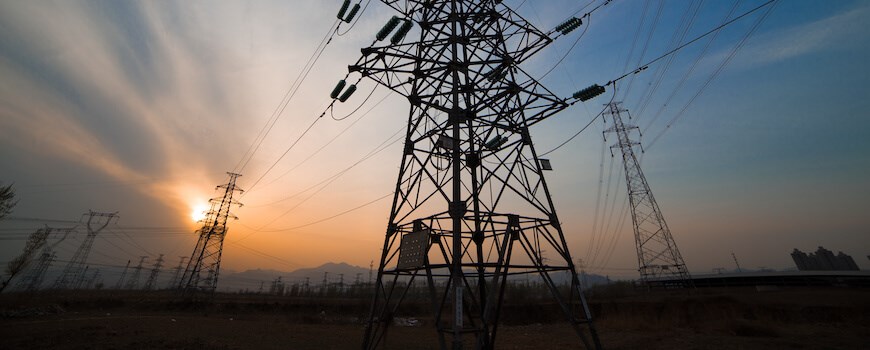Energy is essential for the functioning of modern societies, from powering homes and industries to fueling transportation and communication systems. Over the years, various energy sources have been harnessed to meet the growing demands of global populations. These sources can be broadly categorized into renewable and non-renewable energy sources, each with its own benefits, limitations, and methods of conversion into usable power.
In this article, we will explore the different types of energy sources, how they work, and their significance in the current energy landscape.
Non-Renewable Energy Sources
Non-renewable energy sources are those that are finite and cannot be replenished on a human timescale. These sources have been the backbone of industrialization and technological advancements over the past centuries. However, their environmental impacts and limited availability make them less sustainable in the long run.
Fossil Fuels
Fossil fuels are the most commonly used non-renewable energy sources and include coal, oil, and natural gas. These fuels are formed from the remains of ancient plants and animals that have been buried under layers of earth for millions of years. Over time, heat and pressure transformed these organic materials into combustible fuels.
Coal
Coal is one of the oldest energy sources and remains a primary fuel for electricity generation and industrial processes. It is mined from the earth and burned in power plants to produce electricity. The process of burning coal releases carbon dioxide (CO2), a major greenhouse gas that contributes to climate change.
How Coal Works:
- Coal is burned in a furnace to produce heat.
- The heat generates steam, which drives a turbine connected to an electric generator.
- The generator converts mechanical energy from the turbine into electricity.
Oil
Oil, or petroleum, is another significant fossil fuel used to generate energy. It is extracted from deep underground reservoirs through drilling. Oil is refined into various products, including gasoline, diesel, and jet fuel, which power transportation systems. Oil is also used in the production of electricity in some power plants.
How Oil Works:
- Oil is burned to create heat.
- Like coal, the heat generates steam that drives a turbine and electric generator to produce electricity.
- Oil is also refined into liquid fuels for transportation, heating, and industrial uses.
Natural Gas
Natural gas is primarily composed of methane and is used for electricity generation, heating, and as a fuel in industrial processes. It is considered a cleaner fossil fuel than coal or oil because it produces fewer emissions, particularly carbon dioxide, when burned. Natural gas is often used in gas-fired power plants and is also a common household fuel.
How Natural Gas Works:
- Natural gas is burned in gas turbines or steam turbines.
- The combustion process generates heat, which is used to produce steam that drives turbines.
- Natural gas is also used directly as a fuel for heating and cooking.
Nuclear Energy
Nuclear energy is a non-renewable energy source that harnesses the power of atomic reactions to generate electricity. In nuclear power plants, atoms of uranium or plutonium are split in a process called fission. This releases a large amount of energy in the form of heat, which is used to generate steam and power turbines.
How Nuclear Energy Works:
- Uranium or plutonium atoms undergo nuclear fission, releasing a large amount of energy.
- The heat generated from the fission process is used to convert water into steam.
- The steam drives a turbine, which powers an electric generator to produce electricity.
Although nuclear energy produces no direct CO2 emissions, it generates radioactive waste, which poses long-term storage challenges, and there are concerns about the safety of nuclear power plants.
Renewable Energy Sources
Renewable energy sources are those that are replenished naturally and can be used without depleting the resource. These sources are considered environmentally friendly because they produce little to no greenhouse gas emissions. As the world shifts toward cleaner energy solutions, renewable sources are increasingly being seen as the future of energy production.
Solar Energy
Solar energy is derived from the sun’s radiation and is one of the most abundant and cleanest sources of energy available. It can be captured using photovoltaic (PV) cells or concentrated solar power (CSP) systems.
Photovoltaic (PV) Cells
Photovoltaic cells are made from semiconductor materials like silicon. When sunlight hits these cells, it excites electrons, creating an electric current. This electricity is then used to power homes, businesses, or fed into the grid.
How PV Solar Energy Works:
- Photovoltaic cells convert sunlight directly into electricity through the photovoltaic effect.
- The electricity generated can either be used on-site or stored in batteries for later use.
Concentrated Solar Power (CSP)
CSP systems use mirrors or lenses to focus sunlight onto a small area, generating heat. This heat is then used to produce steam, which drives a turbine connected to an electric generator.
How CSP Works:
- Mirrors or lenses focus sunlight onto a receiver.
- The concentrated heat is used to produce steam, which drives turbines to generate electricity.
Wind Energy
Wind energy is harnessed from the kinetic energy of moving air, which turns blades of a wind turbine. This motion is then converted into electricity. Wind energy is one of the fastest-growing sources of renewable power globally and is increasingly used in both onshore and offshore wind farms.
How Wind Energy Works:
- Wind turbines capture the energy of moving air.
- The rotating blades turn a shaft connected to a generator, converting mechanical energy into electrical energy.
Hydropower
Hydropower, or hydroelectric energy, harnesses the energy of flowing water to generate electricity. Dams are often built on rivers, creating a reservoir that stores water. The water is released in a controlled manner through turbines, which drive generators to produce electricity.
How Hydropower Works:
- Water stored behind a dam is released through turbines.
- The force of the water turning the turbines generates mechanical energy, which is converted into electricity by a generator.
In addition to large-scale hydroelectric plants, there are also smaller, run-of-the-river systems that generate power without the need for large dams.
Biomass Energy
Biomass energy comes from organic materials, such as plants, agricultural residues, and waste products. These materials are burned to generate heat, which can be used to produce electricity. Biomass can also be converted into biofuels, such as ethanol and biodiesel, which are used in transportation.
How Biomass Energy Works:
- Organic materials are burned to produce heat, which generates steam.
- The steam drives turbines that generate electricity.
- Biomass can also be processed into biofuels for use in vehicles and industrial processes.
Geothermal Energy
Geothermal energy uses the heat stored beneath the earth’s surface to generate electricity or provide direct heating. Geothermal power plants are typically located in regions with high levels of volcanic activity or tectonic movement, where heat from the earth is more easily accessible.
How Geothermal Energy Works:
- Water is injected into the earth’s crust, where it is heated by hot rocks.
- The steam produced from the heated water drives turbines connected to generators, producing electricity.
Geothermal energy is a stable and reliable source of energy, but its geographical limitations restrict its widespread use.
Conclusion
The world is witnessing a dramatic shift in the way we generate and consume energy. While non-renewable energy sources like fossil fuels and nuclear power continue to play a role, renewable energy sources are increasingly taking center stage due to their sustainability and environmental benefits. Solar, wind, hydropower, biomass, and geothermal energy are all poised to become major players in the global energy landscape.
As technology advances, energy storage solutions improve, and society becomes more committed to reducing carbon emissions, renewable energy will continue to grow in importance. Understanding how different energy sources work and their respective roles in our energy future will help guide decisions about energy production, policy, and consumption.
Whether through solar panels on rooftops, wind turbines in fields, or the use of geothermal heat from the earth, the future of energy lies in a diverse and sustainable mix of renewable sources that will help power the world while protecting the planet for future generations.

